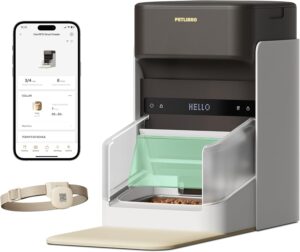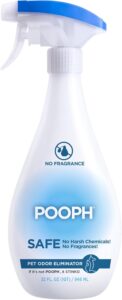
“`html
Introduction
Aquarium enthusiasts understand that maintaining a healthy aquatic environment is crucial for the well-being of fish and other aquatic organisms. One of the most important aspects of aquarium maintenance is regular water testing. Proper water quality ensures the health and longevity of the aquarium’s inhabitants by preventing stress and disease. This article delves into essential aquarium water testing tips to help maintain optimal health in your aquatic environment.
Understanding Water Chemistry
Before delving into testing tips, it is vital to understand the fundamental parameters that influence water chemistry in an aquarium. These include pH, ammonia, nitrite, nitrate, water hardness, and temperature.
pH Levels
The pH level indicates how acidic or alkaline the water is. Most freshwater fish thrive in a pH range of 6.5 to 7.5, while saltwater fish prefer a pH of 8.1 to 8.4. Maintaining stable pH levels is crucial, as sudden changes can stress fish, making them susceptible to disease.
Ammonia, Nitrite, and Nitrate
These three nitrogen compounds are part of the nitrogen cycle, a critical process in any aquarium. Ammonia is toxic to fish and is produced from fish waste and decaying organic matter. Beneficial bacteria convert ammonia into nitrite, which is also harmful, and then into nitrate, which is less toxic. Regular testing ensures these levels remain safe for aquatic life.
Water Hardness
Water hardness refers to the concentration of dissolved minerals, primarily calcium and magnesium. Different fish species have varying hardness preferences, so understanding and maintaining the appropriate level is essential for their health and reproduction.
Temperature
Temperature affects metabolic rates in fish and other aquatic organisms. Sudden temperature changes can be detrimental, so it is important to monitor and maintain a consistent temperature suited to your aquarium’s inhabitants.
Essential Water Testing Tips
Regular water testing is a proactive approach to maintaining a healthy aquarium. Here are essential tips to ensure you effectively monitor and manage water quality.
Use Reliable Test Kits
Investing in high-quality test kits is crucial for accurate readings. There are various types of test kits available, including liquid test kits, test strips, and digital meters. Liquid test kits are often considered the most accurate, while test strips provide convenience. Digital meters offer precision but can be more expensive.
Establish a Testing Routine
Consistency is key when it comes to water testing. Establish a routine to test your aquarium water regularly. For new aquariums, test daily until the nitrogen cycle stabilizes. Once established, weekly tests are generally sufficient. However, if you notice any changes in fish behavior or water appearance, conduct tests immediately.
Record and Analyze Results
Keep a log of your test results. Recording pH, ammonia, nitrite, nitrate, and other parameters allows you to track trends and identify potential issues before they become serious problems. This data can help pinpoint changes in water quality and guide necessary adjustments.
Understand and Address Imbalances
If test results reveal imbalances, it is important to understand the cause and take corrective action. For example, high ammonia levels may necessitate a water change or increased biological filtration. Addressing issues promptly ensures a stable environment for your aquatic life.
Specific Testing Tips for Freshwater and Saltwater Aquariums
While the basic principles of water testing apply to both freshwater and saltwater aquariums, there are specific considerations for each type.
Freshwater Aquarium Testing
– **pH Stability:** Freshwater fish are sensitive to pH fluctuations. Use a buffer solution to maintain stable pH levels, especially if your tap water has varying pH.
– **Ammonia Monitoring:** During the initial setup of a freshwater tank, monitor ammonia levels closely to establish the nitrogen cycle. Once established, ensure ammonia remains at zero.
– **Water Hardness Adjustments:** Depending on the fish species, you may need to adjust water hardness. Use commercial products to adjust hardness levels as needed.
Saltwater Aquarium Testing
– **Salinity Levels:** In addition to the standard parameters, saltwater aquariums require salinity testing. Use a hydrometer or refractometer to maintain appropriate salinity levels for your marine life.
– **Calcium and Alkalinity:** Reef tanks require additional testing for calcium and alkalinity to support coral growth. Regularly test and adjust these parameters to maintain a healthy reef environment.
– **Protein Skimmer Efficiency:** Ensure your protein skimmer is functioning effectively to remove organic waste, which helps maintain water quality.
Advanced Testing Considerations
For aquarists seeking to optimize their aquarium further, advanced testing parameters can be considered.
Dissolved Oxygen
Dissolved oxygen is crucial for fish respiration. High stocking levels or overfeeding can reduce oxygen levels. Use a dissolved oxygen test kit to ensure adequate oxygenation, especially in heavily stocked tanks.
Phosphate Levels
High phosphate levels can lead to algae blooms. Test and manage phosphate levels, particularly in planted or reef aquariums, to prevent excessive algae growth.
Trace Elements
In reef tanks, testing for trace elements like magnesium, iodine, and strontium is important for coral health. Use specialized kits to monitor and adjust these elements as needed.
Conclusion
Regular water testing is an essential aspect of aquarium maintenance that ensures the health and well-being of aquatic life. By understanding water chemistry, using reliable test kits, establishing a testing routine, and addressing imbalances, aquarists can maintain a stable and healthy aquatic environment. Whether maintaining a freshwater or saltwater aquarium, these essential water testing tips will help you achieve optimal health for your aquatic inhabitants, ensuring a thriving and vibrant underwater world.
“`
#ChatGPT assisted in the creation of this article.








